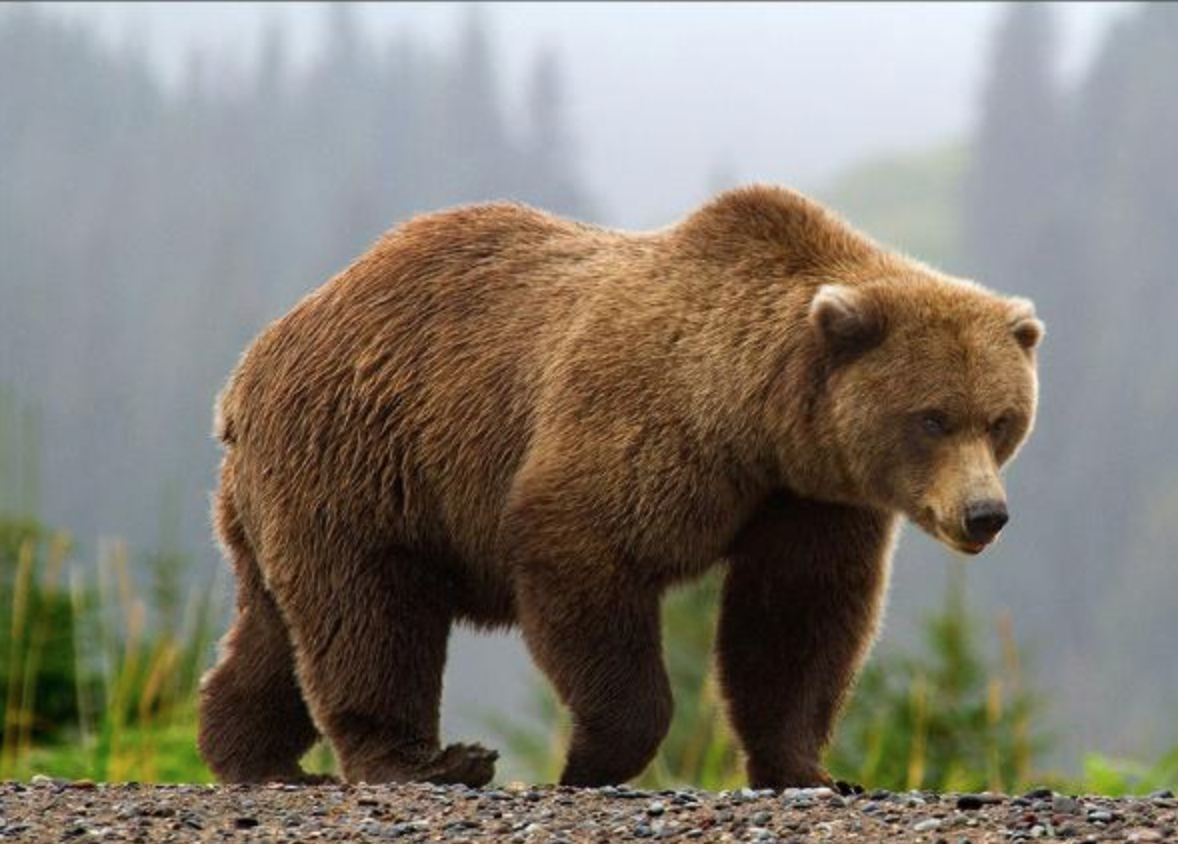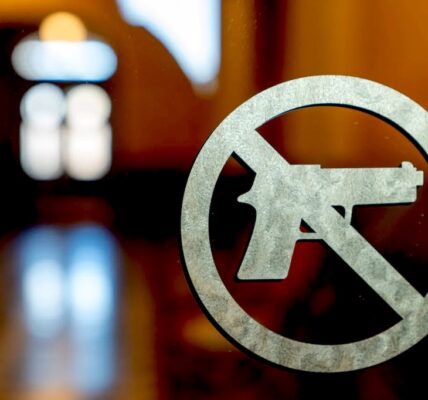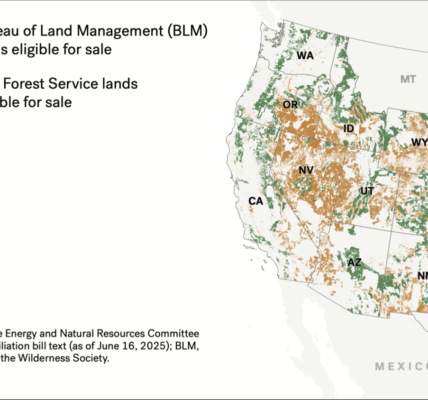(Video) – Grizzly relocation less common, still important management tool
By Mark Davis
Powell Tribune
Via- Wyoming News Exchange
POWELL — As a grizzly bear chased a wounded elk into the river in the Hayden Valley in Yellowstone National Park, a Cody wildlife photographer trained her video camera on the surprising series of events. The result of B.E. Judson’s effort gave the world a somewhat hard to watch, yet intimate and educational view of a day in the life of predator and prey.
What may be a common event outside the view of visitors became a rare glimpse of the savage nature of wild places. The video has been viewed by more than 1.3 million people since being posted to YouTube on Sept. 18. The boar took down the injured bull and soon became a star in the region’s grizzly population; the bear defended its cache of meat over the following days during the hyperphagia of fall.
“I was stunned to see the grizzly follow the elk into the river, particularly since I didn’t see it in the timber as the elk first entered the river,” the Cody resident said in the comments section of her YouTube video.
“Yellowstone National Park wildlife managers, biologists, and science researchers have tools to keep track of some of the wildlife population with electronic collars or ear tags, but visitors like myself are, on occasion, simply lucky,” she said.
In the case of this massive bruin, tracking bear #791 prior to the attack was made difficult after it slipped its radio telemetry collar the previous year. Yet, the bear is believed to be well known by the Wyoming Game and Fish Department, having previously been given a second chance at life in the Greater Yellowstone Ecosystem. Game and Fish large carnivore biologists relocated the bear to an area just outside of the park after documented conflicts with livestock producers.
“Relocation basically gives a bear at least one more chance it wouldn’t have had,” said Wyoming Game and Fish Large Carnivore Section Supervisor Dan Thompson.
The Game and Fish has been relocating grizzlies since the species was listed for protections under the Endangered Species Act in 1975. The department averages about 20 relocations a year in a labor-intensive process involving multiple agencies and boots on the ground.
In 2010, a record 49 grizzly bears were relocated.
But in the past decade, there have been fewer bears moved. Thompson explained the ability to find available habitat is more difficult as the species has reached its carrying capacity inside their core habitat within the greater Yellowstone ecosystem and, especially now as more people are seeking outdoor recreation during the pandemic, areas safe to move one of the area’s apex predators.
There have been a lower number of relocations this year, but there are also a lot more people in the habitat. The public’s tolerance for moving bears is growing thin, Thompson said. “We’ve had increased incidences of human injuries and pretty significant conflicts during hyperphagia” — the time when bears become obsessed with feeding prior to entering hibernation.
“The thing we’re dealing with now is, 20 years ago relocation was a lot different because there weren’t near as many bears,” Thompson said. “There was more open home range areas, and you could move a bear and find a place for it to live. Nowadays, it’s just hard to do that.”
Management cases all begin with a complaint of a conflict. One or two of team members will respond to investigate. They’ll make an initial decision on what’s to resolve the conflict. It can be as little as educating residents on proper ways to alleviate attractants, but that’s not always enough. If they decide to set a trap, there are multiple phone calls and text messages among other Game and Fish personnel, the Fish and Wildlife Service, the Forest Service, or other entities needing to be involved in the decision. The trap is set, but usually for only a couple of days.
“We don’t want to run a trap too long, so we don’t catch non-target bears,” Thompson said.
Once a bear is caught in large, barrel-type traps or snares, the team begins to contact the appropriate personnel to decide the type of management decision. It’s never made beforehand, Thompson said, unless officials know the target individual based on a collar or ear tag. Some bears have a history of agressive behavior, conflicts or have been involved in an attack on a human. It’s possible the initial decision will be to “remove” the bear from the ecosystem. That’s an industry term to say it needs to be euthanized.
“Either way, you know, we’ll have to mobilize that bear. And then we’ll start another round of phone calls,” he said.
The team starts looking at available relocation sites, coordinating with Fish and Wildlife Service regional personnel and administrators at the U.S. Forest Service. Meanwhile, the team has worked up biological samples and taken all necessary measurements and marked the bear with identification tags in case it drops its collar. They’re also coordinating within the team for transportation. They need to move bears a good distance from their home territory to help discourage returning. Biologists frequently meet halfway between to shorten the trips — usually between the Jackson and Cody regions.
The team tries to release a bear near dusk if possible. Sometimes they choose a relocation site only to find people there. Then they have to pick a new site on the fly. The process involves 12 to 13 people with the management decision — and that’s before managers fill out all the necessary data sheets and reports required for each decision.
The large carnivore section consists of 10 full-time employees and several seasonal technicians. The process can start at any time of the day, with the Cody regional team being the busiest as bears continue to move east of the Absaroka Range. Thompson, who works out of the Lander office, has been called away for wildlife conflicts on Christmas Eve the past three years in a row.
All grizzly bears selected for relocation are fitted with radio collars so the large carnivore team can keep track of their whereabouts after the release.
Bear #791 was released in the North Fork area near the border of Yellowstone Park. Fortunately he decided to stay in the habitat and eventually provided the world with an unforgettable lesson. The elk he killed had a broken back leg. It was a beautiful bull, but would have eventually succumbed to the injury, suffering until its death.
Other bears aren’t as fortunate. In one case, a sow and her two cubs were relocated to the Jackson area and then, searching for a safe area to live, traveled all the way to Big Horn County, eventually being caught and euthanized near Byron. Crossing the invisible line between appropriate and undesirable habitat is a lethal mistake for a grizzly.
For the large carnivore team it was a sad day, but unfortunately a fairly common occurrence. As of Monday, 26 grizzly bears had been permanently removed from both inside and outside appropriate habitat known as the Demographic Monitoring Area so far this year. That number does not include those killed on the road in collisions, bears killed by their own species and by humans during conflict. There have been 38 known grizzly mortalities in the three-state area — Wyoming, Montana and Idaho — so far this year.
“Conflicts are happening almost on a daily basis as the [species’] footprint increases,” Thompson said. “We’ve been able to add [employees] to try to deal with some of the increase. But obviously, we’re also dealing with a lot of changes now from a state budget perspective.”
“We’re still going to do everything we can — we’re gonna maintain our obligations to the public,” he said. “But yeah, with the footprint increasing, it increases our workload.”
The Fish and Wildlife Service gives Wyoming about $100,000 per year to assist with the cost of managing the species — less than 5% of Wyoming’s yearly budget in conservation and mitigation costs.






